Published on Egyptological, Magazine Edition 4, February 27th 2012
By Andrea Byrnes
Part 1 – The historical and political context
Introduction
In January 2012, thanks to the discovery of a new tomb in the Valley of the Kings, named KV64, the 22nd Dynasty was catapulted into the spotlight.
Although the tomb itself probably dates back to the 18th Dynasty, and we eagerly await a verdict on whose tomb it may have been originally, it has been announced that the most recent occupant belongs to the 22nd Dynasty (University of Basel 2012a). The female mummy was buried in a wooden sarcophagus, apparently fully wrapped in undamaged bandages, and accompanied by small but highly decorated stela (figure 1). At the moment, apart from a couple of tantalising photographs and a video released by the University of Basel (Switzerland) all we know is that the mummified woman was called Nehmes-Bastet; she was a chantress; and her father was a priest at the Temple of Karnak (University of Basel 2012a).
The 22nd Dynasty, the second phase of the Third Intermediate Period, into which Nehmes-Bastet was born and during which she died, was complicated and is quite poorly understood when compared to earlier periods. O’Connor says that the Third Intermediate Period “was characterized by virtually continuous tension, only rarely flaring into open conflict, between centralizing and centrifugal forces” (1983, p.232). These tensions existed between different parts of the Delta, where the kings resided, and between the northern kings and the southern High Priests of Amun in Thebes.
This article barely touches the surface of these complexities, and is intended only as a top-level introduction to the period for those who would like to understand the historical and cultural background to this elegant and intriguing usurper of an earlier tomb. Those familiar with the key works on the period will doubtless know that many of the details presented here are under discussion and that new discoveries may alter knowledge about the duration and sequence of reigns, and how different areas interacted with each other. In the interests of attempting to provide a coherent overview of the information I have not dealt with areas currently under scholarly discussion, and for further analysis the reader is referred to the bibliography.
The article is divided into two parts. Part 1 looks at the political history of the early Third Intermediate Period. Part 2 looks at culture and funerary traditions.
The end of the New Kingdom
The New Kingdom was at its height in the 18th and early 19th Dynasties, but had become militarily and politically weak by the end of the Nineteenth Dynasty. The Pharaoh Merenptah saw off an attempted Libyan invasion during his rule, but by the end of the dynasty various descendants of the family of Ramesses II appear to have been in conflict over power, undermining the country’s strength.
At the beginning of the Twentieth Dynasty the vast scale of mortuary temple of Ramesses III at Medinet Habu (Luxor, west bank) gives the impression of a revival of fortunes at the start of the dynasty, but it is misleading. Under repeated attack from different invaders, including Libyan groups and the so-called Sea Peoples, Egypt was on the defensive (figure 2).
Following these skirmishes, Ramesses III settled many of the resulting Libyan prisoners within Egypt, to acculturate and employ in the Egyptian army: “These Egyptian forces, swelled by fresh recruits from Libya and commanded by their native chiefs, eventually formed a powerful and independent order on which the Pharaoh had no choice but to rely” (Murnane 1983, p.58-9). At the same time, less obvious Libyan incursions slowly increased the numbers of Libyans in northern Egypt: “In a kind of reverse exodus, and despite the earlier defeats at the hands of the Egyptians, they successfully moved as a series of complete societies from homelands that must have lain along the Mediterranean coastal zone to the Nile Valley. There they set themselves up in positions of authority, eventually becoming the rulers of large parts of the country” (Kemp 2006, p.44). Manley suggests that their presence was tolerated in Egypt because of their extensive trading interests, which would have benefited Egyptian commerce (Manley 1996, p.96). Initially settling in the Delta, they eventually formed large communities between Memphis, Herakleopolis and the Faiyum. By the end of the Ramesside period “Egypt had unintentionally become a country of two cultures” (Wilkinson 2010, p.388). The Libyan presence in Egypt probably resulted in the integration of various individuals into Egyptian society and official life.
These Libyan settlers were from a political and economic environment quite unlike Egypt’s. The area known today as Libya was not a centralized political nation but was populated by tribes. Manley characterizes them as “mainly pastoral peoples with strong armies” who were governed by tribal kings, already recognized as a threat by Ramesses II who constructed a series of Mediterranean complexes thought to be forts to protect against their incursion into the Delta. O’Connor points out that references to Meshwesh towns, together with the rich booty taken by Ramesses III (including bronze swords and chariots) “suggest that the level of material culture was well above that of a simple pastoral society” (O’Connor 1983).
The Twentieth Dynasty never reached the heights of its more glorious predecessors and fell into increasing political, financial and social disarray. Kitchen describes the situation as follows: “The self-sufficient pride of the Theban hierarchy and weakness of the kings, who lived almost entirely in the northern capitals, helped to accentuate the practical cleavage between south and north which was now to be formalized politically” (Kitchen 1996, p.248). Increasingly isolated in the north, the kings of the Twentieth Dynasty delegated increasingly to the High Priest of Amun for a number of civil governmental tasks in the south, and this encouraged conflict in Thebes. In the reign of the last Pharaoh of the New Kingdom, Ramesses IX, the Viceroy of Nubia, Panhesy was appointed to take control of Thebes with a Nubian army, but after seven years was ousted by another pretender to power in Thebes: “A new man, one Herihor, now appeared as High Priest of Amun, as Generalissimo and Army-leader more specifically ‘Captain at the Head of the Army of All Egypt’ – and also as Viceroy of Nubia to replace Panehsy who was now himself a rebel in Nubia” (Kitchen 1996, p.248) (figure 3). Panhesy fled to Nubia, which was now lost to Egypt, an independent nation depriving Egypt of free access to the gold and sub-Saharan African luxury goods that had formerly supported the economy.
When Ramesses XI died “little mourned and largely irrelevant” (Wilkinson 2010, p.385) the throne passed to one Smendes, who came to power at about the same time that the third successor of Herior, Pinudjem I, came to power in Thebes. Throughout the Ramesside period, the capital city of Egypt was Pi-Ramesse in the eastern Delta, with Memphis and Thebes functioning as vital governmental and religious centres respectively. In the 21st Dynasty, however, Smendes, relocated the capital city to Djanet (better known today as Tanis), whilst a series of powerful High Priests, in the mould of Herihor, retained control in Thebes. It is not known where Herihor was buried but the body of his wife was found in the Deir el-Bahri royal cache.
The Twenty First Dynasty
The Twenty Second Dynasty can only be understood in the context of the Twenty First Dynasty from which it arose.
Very little is known about Smendes or how he succeeded to the throne of Egypt, but it is thought that his wife may have been a member of the Ramesside royal family, and that he was the maternal uncle of Pinudjem I, both of which would have provided his reign with some legitimacy. The new northern capital city Djanet (or Tanis, now San el-Hagar), formerly secondary to Pi-Ramesse, was probably the home town of the new king. Djanet was ideally located for both agricultural activities and trade on the Tanitic branch of the river Nile, which crossed the north east Delta to the Mediterranean. It was the main centre of the Cult of Amun in the Delta.
The Delta itself was by now highly fragmented in terms of political control. Two main tribes represented settlement in the Delta, but they themselves had fractured into different power houses. Wilkinson believes that the geography of the Delta itself catalysed this process: “The inaccessible marshlands and winding waterways had always favoured political fragmentation, and in the heyday of Libyan dominance in the Delta divided readily into a patchwork of competing centres” (Wilkinson 2010, p.391). The Meshwesh had dominance at Djanet, Mendes and Bubastis. The Libu, who may have arrived later than the Meshwesh, dominated in the western Delta around Imau and founded Sais. The Mahasun were concentrated in the southern Delta.
The ultimate king was no longer the ruler of Egypt. Instead the Delta kings now answered to Amun. Strategic governmental decisions were made not by the king, but by Amun, Mut and Khons (the Theban triad) via oracles. The oracles that had become increasingly important during the Twentieth dynasty were employed to confirm official appointments and sanction political policy.
The southern region was far less fragmented than the north. In the south Egyptians still outnumbered Libyans and the cult of Amun provided theological continuity with the past. The cult was led by high priests, individuals of considerable authority who acted as rulers of the south, although usually nominally secondary to the king in the north. The high priests were usually, also, army commanders and wielded considerable political and military power. The temples themselves remained economic powerhouses.
Although it might appear that the division between the two would be a source of conflict, it only rarely was. Wilkinson believes that “having two kings ruling concurrently over different parts of the country was not an anathema but entirely normal, not anarchy but sensible decentralization” (Wilkinson 2010, p.391) but O’Connor suggests that the main factor ensuring peace was “the concordat whereby a unique royal dynasty (of Smendes) received formal recognition throughout Egypt, in return for ceding effective control of Middle and Upper Egypt to a line (descended from Herihor) of great army commanders who were simultaneously high priests of Amen at Karnak” (1983, p.235). The role of High Priest became largely hereditary, helping to ensure that Upper Egypt was usually controlled by a single family. Connections between north and south were reinforced by alliances and marriages that kept connections between the two regions active.
The Sequence of the Twenty Second and Twenty Third Dynasties
Much of the confusion surrounding the Third Intermediate period lies in the fact that the 22nd, 23rd and 24th Dynasties are partially contemporary.
There is also confusion over what the 23rd Dynasty actually represents. Some writers use the 23rd Dynasty to refer to a set of alternative rulers based at Leontopolis, which O’Connor refers to as a “royal co-dynasty” (1983 p.235), others use it for both Leontopolis and Thebes, and other writers refer to only the Theban rulers as the 23rd Dynasty. This article uses the third system.
For a full list of rulers in each Dynasty see Appendix I, at the end of this article. The exact sequence of reigns, their dates and durations is still open to discussion and debate, and new schemes will doubtless emerge in the future as new discoveries are made in Djanet, Thebes and elsewhere.
Politics in the 22nd and 23rd Dynasties
The 22nd Dynasty began when the throne was passed to the Libyan commander Sheshonq I. Taylor (2010) suggests that during the 22nd Dynasty the population of the Delta was dominated by the Libyans and that of the south by Egyptians, with tribes of the Libu entering Egypt at this time, occupying large areas of the Western Delta.
Although many of the Libyan rulers had probably been based in Tell Basta in the Delta, they ruled Djanet for the duration of the 22nd Dynasty, between 945 and 773 BC. For a short period of time Egypt seems to have been a more or less unified state. Described by Kitchen as “one of the most shrewd and astute personalities to ascend the Egyptian throne in many a long year” (1996, p. 287) Sheshonq I appears to have been the most powerfully motivated of the kings of the post New Kingdom period, working to re-centralize political control, assigning his son to the position of High Priest of Amun to control Thebes, stationing another son at Herakleopolis, reducing the use of oracles to form policy, and encouraging marriages of Theban officials into the royal family. He adopted all five traditional Egyptian Pharaonic names (figure 5), and from the fifth year of his reign onwards “even reluctant Thebes acknowledged him officially as full pharaoh” (Kitchen 1996, p. 288). At the same time he pursued an aggressive foreign policy, advancing into the Negev, Israel and Palestine, reaching Megiddo. Some of these military triumphs were recorded on his unfinished additions to the temple of Karnak.
After the death of Sheshonq I, shortly after his return from these campaigns, most of these policies were abandoned. The throne passed to Osorkon I (figure 6), who appointed his son Shoshenq C to the opposition of High Priest of Amun in Thebes. Osorkon bestowed gifts on temples throughout Egypt to deities worshiped at the time, including Ra-Horakhte, Hathor-Nebethetepet, and Mut at Heliopolis, Thoth at Hermopolis, Bast at el-Bast, and Amun, presumably at Karnak (Kitchen 1996, p.303). His building projects include additions to temples and a new fortress near the entrance to the Faiyum.
In spite of this strong start, by the reign of Osorkon II, who reigned for nearly 40 years, Egypt was in no position to prevent Assyrian advances on its commercial interests in the Levant and elsewhere. Kitchen refers to the period between the reigns of Osorkon II and Takelot II as “an age of crisis” (p.313). Power was once again a matter of dispute: “the unique character of the pharaoh, previously a hallmark of the Egyptian state, was no longer maintained” (Taylor 2010, p.220). An inscription from the reign of Osorkon II indicates that there may have been in-fighting in the royal family regarding positions of authority. He lists various appointments of his children to important offices and requests the blessing of Amun for these with, as Taylor puts it “the significant proviso that ‘brother should not be jealous of brother’ ” (2003, p.330). The Delta became divided between a series of local rulers, many of whom were functioning independently of the kings in Djanet, of whom “several declared themselves king” (Taylor 2003, p. 330). Taylor states that by 730BC that as well as the kings at Djanet there were two in the Delta at Bubastis and Leontopolis, one at Hermopolis, one at Herakleopolis and one at Sais in the Delta (2003). Osorkon II appointed the son of a previous ruler to the position of High Priest of Amun, an individual named Hariese. After ten years in the position, Hariese gave himself full Pharaonic titles, passing the position of High Priest to his son. He was buried in Medinet Habu, in a falcon-headed stone sarcophagus, the equivalent of the coffins of the kings in the Delta, suggesting that he saw himself as an equal to them, a kingly son of Horus.
This separation between the north and south effectively resulted in the Theban 23rd Dynasty. A High Priest of Amun named Sheshonq “generated a collateral dynasty” (O’Connor 1983, p.240), being succeeded by two brothers, a son and a grandson. King Osorkon II attempted to resolve the matter by declaring his own son the governor of both Herakleopolis and Thebes, an appointment next handed to King Takelot II’s son Prince Osorkon. For a while Prince Osorkon was successful in keeping the Thebans happy, “bringing shiploads of provisions and offerings for the great Theban Festivals” (Blyth 2006, p. 190) but civil war eventually erupted: “The claims of Prince Osorkon, son of Takelot II, to the pontificate provoked fierce resistance, the Thebans preferring to recognize the authority of the 23rd Dynasty kings Pedubastis I and Iuput I, and subsequently Osorkon III and his successors, rather than that of the Tanite pharaohs” (Taylor 2003, p.339). Sheshonq III was the king of Egypt when the kingship was divided between Djanet and Leontopolis (now Tell el-Muqdam in the central Delta), a line of rule nominally accepted by the Thebans in preference to the rulers at Djanet. The break-up of power between different interests makes this a particularly confusing period.
Towards the end of the 22nd Dynasty a new method of dealing with Thebes was instituted, intended to balance the power of the High Priest. An office held by females, the “god’s wife of Amun” (or Divine Adoratrice) was emphasized, and was appointed by the king and, “because of the way it operated, became a useful way of cementing relationships with the kings in the north” (Taylor 2010, p.126). The god’s wife became the central source of power in Thebes, neatly undermining the absolute power of the High Priest. She had two particular advantages: she was a member of the royal family and “now required to be a virgin, the ‘god’s wife’ could not generate a collateral dynasty!” (O’Connor 1983, p.241). The ‘god’s wife’ would usually take on a junior, the equivalent of an intern, who was groomed to replace her on her death. One of the known “god’s wives” from this period was the daughter of Osorkon II, Karomama. A very beautiful statuette portraying her survives in the Louvre with the text “beloved of Amun-Ra, she is the divine spouse, the Divine Adoratrice” (http://www.louvre.fr/en/oeuvre-notices/statue-karomama-divine-adoratrice-amun), (figure 7). A later ‘god’s wife,’ Shepenwepet, was shown with her names in cartouches, and she was portrayed wearing two double crowns at the temple of Osiris Heka-Djet at Karnak (Taylor2003, p355). Fragmentary reliefs show that Shepenwepet celebrated the sed festival, a uniquely kingly role (Taylor2003, p355) indicating that the historic boundaries of prerogatives were changing.
Towards the end of the 22nd and 23rd Dynasties the self-styled “prince of the west” Tefnakht, based at Sais, took over the territories of the western Delta and Memphis before expanding into Upper Egypt (Taylor 2003, p.331). A stela at Gebel Barkal near the Fourth Cataract south of Aswan, set up by the Nubian ruler Piy, stated that he took troops into Egypt to prevent the further expansion of Tefnakht and took Thebes easily, pushing forward to Memphis. Piy returned to Nubia to leave Egypt to its own devices, but his successor Shabaqo launched a new invasion and annexed Egypt to Kush. He and his successors make up the 25th Dynasty, with a new Kushite residence established in Memphis.
Part 1 – Conclusion
In part 1 I have looked at the political history of the early Third Intermediate Period. Achieving a coherent overview has meant sacrificing much of the academic debate that surrounds various aspects of chronology and succession. For those who would like to learn more about the political history of the period, and the detailed analyses of its various dimensions, please see the bibliography below. In Part 2, also in this edition, the cultural and funerary traditions of the early Third Intermediate Period are considered.
Appendix 1 – the Succession of Reigns
From the Digital Petrie website
http://www.digitalegypt.ucl.ac.uk/chronology/3rdintermediateperkings.html
Dynasty 21 (1070/69-946/945 BC)
- Nesbanebdjed (Greek Smendes) (1070/69-1044/43 BC)
- Amenemnisut (Greek Nephercheres) (1044/43-1040/39 BC)
- Pasebakhenniut I (Greek Psusennes) (1044/43-994/93 BC)
- Amenemipet (Greek Amenophthis) (996/95-985/84 BC)
- Osorkon (Greek Osochor) (985/84-979/78 BC)
- Saamun (979/78-960/59 BC)
- Pasebakhenniut II (Greek Psusennes) ( 960/59-946/45 BC)
The high priest of Amun in Thebes
- Piankhi
- Herihor
- Pinodjem I
- Masahalot
- Djedkhonsjufankh
- Menkheperre
- Smendes II
- Pinodjem II
- Pasebakhenniut (Greek Psusennes)
Dynasty 22 (946/45-about 735 BC)
- Sheshonq I (946/45-925/24 BC)
- Osorkon I (925/24-about 890 BC)
- Takelot I (about 890-877 BC)
- Sheshonq II (about 877-875 BC)
- Osorkon II (about 875-837 BC)
(after Osorkon II Egypt is no longer united: several kings still rule from Tanis, the others in Upper Egypt)
- Sheshonq III (about 837-798/785? BC)
- Sheshonq IIIa (about 798-785 ? BC)
- Pamui (about 785-774 BC)
- Sheshonq V (about 774-736 BC)
The Upper Egyptian line
- Horsiese (about 870-850 BC)
- Takelot II (about 841-816 BC)
- Padibast (about 830-80/800 BC)
- Iuput I (about 816-800 BC)
- Sheshonq IV (about 805/00-790 BC)
- Osorkon III (about 790-762 BC)
- Takelot III (about 767-755 BC)
- Rudamun (about 755-735 BC)
- Ini (about 735-730 BC)
Dynasty 23 (818-715 BC)
(a term from the Hellenistic kinglists, applied by different Egyptologists to different groupings of kings: it is used here for numerous local kings of the late ninth and eighth centuries, not ruling from Tanis, whose rulers form the Twenty-second Dynasty, or from Sais, whose rulers form the Twenty-fourth Dynasty)
- Padibast II (in Bubastis/Tanis) (about 756-732/30 BC)
- Iuput II (in Leontopolis) (about 756-724 (?) BC)
- Osorkon IV (about 732/730-722 BC)
- Psammus (?) (about 722-712 BC)
Dynasty 24 (727-715 BC)
- Tefnakht (about 740-719/17 BC)
- Bakenrenef (Greek Bocchoris) (about 722-712 BC)
Bibliography
Please note, additionally, that a new Facebook page dedicated to the Third Intermediate Period was launched in February 2012 (http://www.facebook.com/groups/239832019441502/) in which Aidan Dodson announced that his new book on the Third Intermediate is to be published sometime after mid March 2012. It is entitled: Afterglow of Empire: Egypt from the Fall of the New Kingdom to the Saite Renaissance (American University in Cairo Press). His comments about it imply that it will challenge some of the existing interpretations.
Aston D.A. 1989.
Takeloth II – A King of the Theban Twenty-Third Dynasty
Journal of Egyptian Archaeology 75 (1989), p.139-152
Aston D.A. 1996.
Egyptian Pottery of the Late New Kingdom and Third Intermediate Period (Twelfth-Seventh Cenetury BC).
SAGA 13
Aston D.A. 1999.
Elephantine XIX. Pottery from the Late New Kingdom to the Early Ptolemaic Period.
Archäologische Veröffentlichungen 95
Blyth, E. 2006
Karnak: Evolution of a Temple
Routledge
Derry, D.E. 1939
Note on the Remains of Shashanq
Annales du Service des Antiquités de l’Égypte 39 (1939), p.549-551
Dodson, A. and Ikram, S. 2008
The Tomb in Ancient Egypt
Thames and Hudson
Graves-Brown, C. 2010
Dancing for Hathor: Women in Ancient Egypt
Continuum
Grimal, N. 1988 (English translation 1992)
A History of Ancient Egypt
Wiley-Blackwell
Kemp, B. 2006 (second edition)
Ancient Egypt. Anatomy of a Civilization
Routledge
Kitchen, K.A. 1996 (second 1986 edition, reprinted with new preface)
The Third Intermediate Period in Egypt (1100–650 BC).
Aris & Phillips Limited.
Manley, B. 1996
The Penguin Historical Atlas of Ancient Egypt
Penguin Books
Murnane, W.J. 1983
Penguin Guide to Ancient Egypt
Penguin Books
O’Connor, D. 1983
New Kingdom and Third Intermediate Period
In Trigger, B.G., Kemp, B.J., O’Connor, D. and Lloyd, A.B. Ancient Egypt: A Social History
Cambridge University Press
Reeves, N. and Wilkinson, R.H. 1996
The Complete Valley of the Kings
Thames and Hudson
Ritner, R.K. 2009
The Libyan Anarchy. Inscriptions from Egypt’s Third Intermediate Period
The Society of Biblical Literature
Ryan, D. 1992
The Valley Again
KMT 3(1), Spring 1992, p.44-47
Schaden, O. 1991
Preliminary report on clearance of WV–24 in an effort to determine its relationship to royal tombs 23 and 25
KMT 2(3), 1991 p.53-61
Strouhal, E. 1992, 1996
Life of the Ancient Egyptians
Liverpool University Press
Strudwick, N. 1997-2010
Re-use of TT99 in 22nd and 23rd Dynasties
http://www.fitzmuseum.cam.ac.uk/tt99/history/reuseD22.html
Strudwick, N. and Strudwick, H. 1999
Thebes in Egypt. A Guide to the tombs and Temples of Ancient Luxor
British Museum Press
Taylor. J.H. 2000
Coffins and cartonnage cases
Website: The Tomb of Senneferi, Theban Tomb 99
http://www.fitzmuseum.cam.ac.uk/tt99/report00/coffins.html
Taylor.J.H, 2003 (third edition)
The Third Intermediate Period, from The Oxford Hisory of Ancient Egypt,
In Shaw, I (ed.) 2003, The Oxford History of Ancient Egypt
Oxford University Press
Taylor, J.H. 2010
Changes in the Afterlife
In: Wendrich, w. (ed) 2010. Egyptian Archaeology
Wiley-Blackwell
Teeter, E. and Johnson, J.H. 2009
The Life of Meresamun: A Temple Singer in Ancient Egypt
Oriental Institute Museum Publications
https://oi.uchicago.edu/research/pubs/catalog/oimp/oimp29.html
Wilkinson, T. 2010
The Rise and Fall of Ancient Egypt. The History of a Civilization from 3000BC to Cleopatra
Bloomsbury
University of Basel 2012a
Press Release, 22nd January 2012 (in English)
http://aegyptologie.unibas.ch/forschung/projekte/university-of-basel-kings-valley-project/report-2012/
Last checked 15th February 2012
University of Basel 2012b
Video of the opening of the coffin on Video Portal:
http://www.videoportal.sf.tv/video?id=d038af77-abd0-4b27-9bc3-9694887eb104
Last checked date
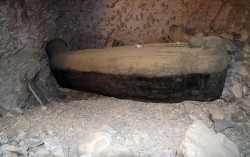
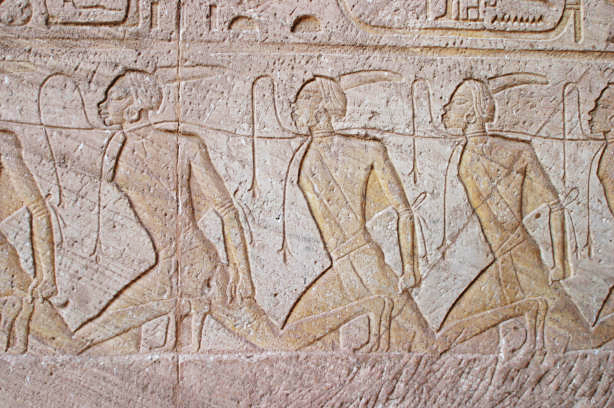
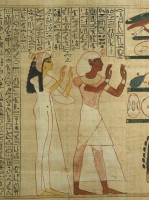

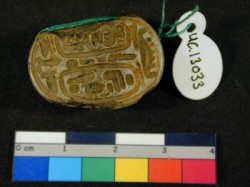
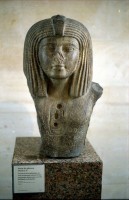
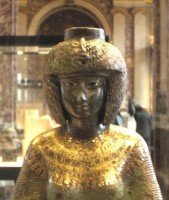
 By
By